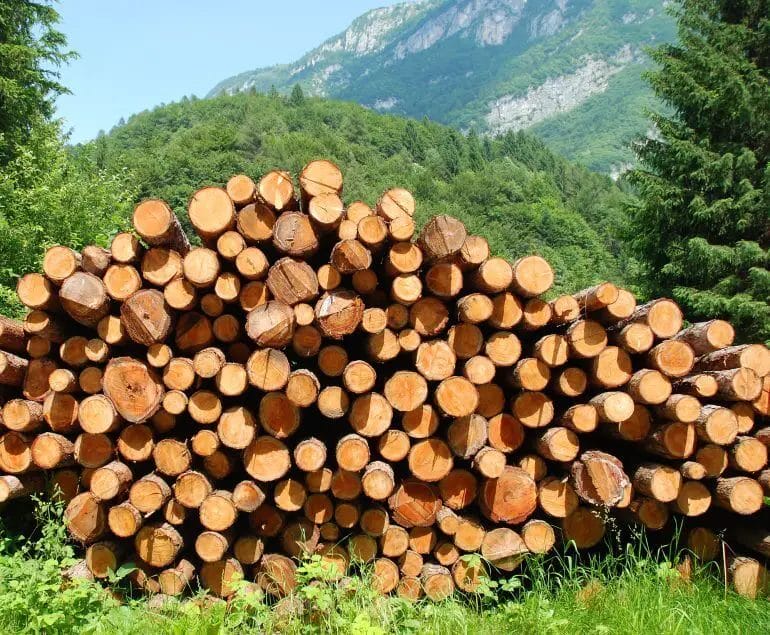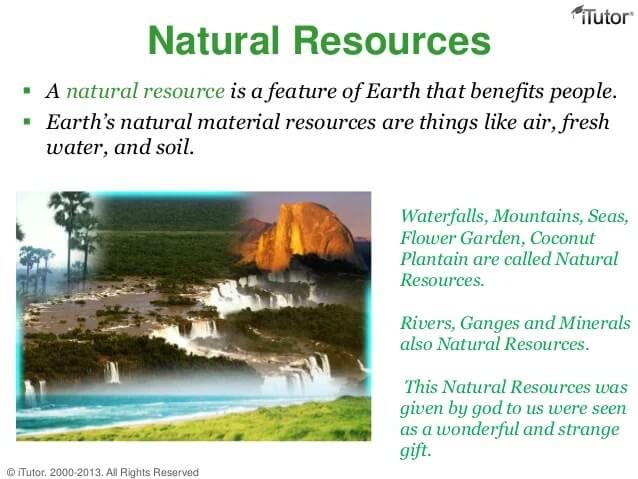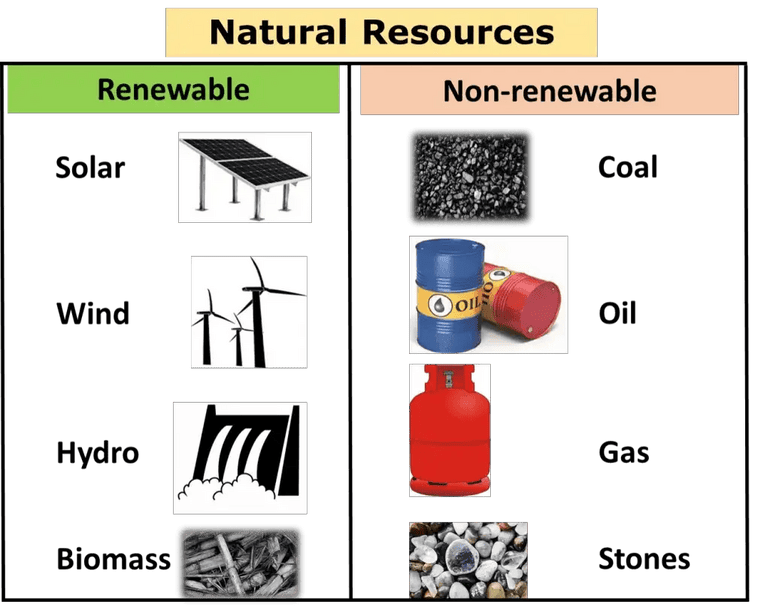Wood is a renewable resource that is derived from trees, making it an essential and sustainable material for various purposes. Unlike nonrenewable resources such as fossil fuels, wood can be replenished through responsible forest management and tree planting.
With its versatility and natural beauty, wood is used in construction, furniture making, paper production, and more. By choosing sustainably sourced wood products, we can support the conservation of forests and ensure the long-term availability of this valuable renewable resource.


Sustainable Alternatives: Eco-friendly Materials to Replace Wood
Wood has been a primary resource for construction, furniture, and various other applications for centuries. However, with the growing concern for environmental sustainability, it is crucial to explore eco-friendly alternatives to replace wood. By opting for sustainable materials, we can reduce deforestation, conserve natural resources, and minimize our carbon footprint. In this section, we will discuss some of the viable alternatives that can be used as substitutes for wood.
Bamboo
Bamboo is a widely recognized sustainable alternative to wood. It is a fast-growing grass that matures within 3-5 years, making it highly renewable compared to traditional timber sources. Additionally, bamboo has impressive tensile strength and durability, making it suitable for various applications such as flooring, furniture, and even structural elements in construction.
Cork
Cork is another eco-friendly material that can replace wood in many applications. It is harvested from the bark of the cork oak tree without causing any harm to the tree itself. The cork oak tree has a unique ability to regenerate its bark, allowing for a continuous supply of cork. This lightweight and moisture-resistant material is commonly used for flooring, wall coverings, and as a sustainable alternative to wood in furniture production.
Recycled Plastic Lumber
Recycled plastic lumber is an innovative material made from post-consumer plastic waste, such as milk jugs and plastic bags. This eco-friendly alternative mimics the appearance and properties of traditional wood while offering superior resistance to rot, insects, and moisture. Recycled plastic lumber can be used for decking, outdoor furniture, fencing, and other outdoor applications, providing a durable and sustainable solution.
Reclaimed Wood
Reclaimed wood refers to salvaged wood from old buildings, barns, or other sources that would otherwise go to waste. By repurposing these materials, we can reduce the demand for newly harvested wood and minimize the environmental impact of deforestation. Reclaimed wood adds a unique charm and character to interior design, making it a popular choice for flooring, furniture, and decorative elements.
Mycelium
Mycelium, the root structure of mushrooms, is an emerging eco-friendly material that holds promising potential as a wood substitute. It can be grown into various shapes and sizes, making it versatile for different applications. Mycelium has excellent insulating properties, is fire-resistant, and can even be engineered to be as strong as traditional wood. This sustainable alternative shows great promise for use in construction, packaging, and furniture manufacturing.
By embracing these sustainable alternatives and incorporating them into our daily lives, we can contribute to the preservation of our planet’s resources. Whether it’s bamboo, cork, recycled plastic lumber, reclaimed wood, or mycelium, these eco-friendly materials offer viable solutions to replace wood without compromising quality or functionality. It’s time to make conscientious choices and embrace a greener future.

Wood Recycling: Reusing and Repurposing Wood Products
In today’s world, where sustainability is gaining more and more importance, finding eco-friendly solutions for waste management is crucial. One area that has seen significant progress in this regard is wood recycling. Wood, being a versatile and durable material, can be reused and repurposed in various ways, minimizing waste and environmental impact.
1. Importance of Wood Recycling
Wood is a valuable resource that takes years to grow and is often obtained through deforestation. By recycling wood, we can extend its lifespan and reduce the need for cutting down new trees. This helps in preserving our forests and protecting the habitats of countless species.
Additionally, recycling wood prevents it from ending up in landfills, where it would decompose and emit harmful gases like methane, a potent greenhouse gas. By diverting wood waste from landfills, we can mitigate the environmental impact associated with waste disposal.
2. Reusing Wood Products
One of the primary ways to recycle wood is by reusing wood products. This involves salvaging wood from old structures, furniture, or pallets and giving them a new life. Reclaimed wood has become increasingly popular in interior design and construction due to its unique character and environmental benefits.
Reclaimed wood can be used in various applications, such as flooring, furniture, wall paneling, and decorative accents. By repurposing wood, we not only reduce the demand for new timber but also add a touch of natural beauty and history to our living spaces.
Moreover, reusing wood products helps in conserving energy and reducing carbon emissions. The production of new wood products requires significant amounts of energy, while reusing existing wood eliminates the need for such energy-intensive processes.
3. Repurposing Wood for Art and Crafts
Wood recycling also extends to the world of art and crafts. Artists and craftsmen often turn discarded or leftover wood into stunning pieces of art. From sculptures and carvings to furniture and home decorations, repurposed wood adds a unique touch to creative works.
Repurposing wood for art not only promotes sustainable practices but also showcases the beauty and versatility of this natural material. It encourages people to think creatively and find new uses for items that would otherwise be discarded.
4. Wood Biomass for Energy Generation
Another way to recycle wood is by utilizing it as biomass for energy generation. Wood biomass, such as wood chips, sawdust, and wood waste, can be converted into heat and electricity through combustion or gasification processes.
Using wood biomass for energy helps in reducing reliance on fossil fuels, which contribute to climate change. It is a renewable and carbon-neutral source of energy, as the carbon dioxide released during combustion is offset by the carbon dioxide absorbed by growing trees.
Furthermore, utilizing wood biomass for energy can provide economic opportunities in rural areas where forestry is a significant industry. It promotes local jobs and supports sustainable forest management practices.
Summary
Wood recycling plays a vital role in sustainable waste management. By reusing and repurposing wood products, we can conserve natural resources, reduce waste, and minimize environmental impact. Whether it’s reclaiming wood for construction, repurposing it for art, or utilizing it as biomass, every effort in wood recycling contributes to a greener and more sustainable future.

Conservation Efforts: Protecting and Preserving Forests
Forests play a vital role in our planet’s ecosystem, providing numerous environmental, social, and economic benefits. They are home to a diverse range of plant and animal species, contribute to climate regulation, support water cycle processes, and serve as a source of livelihood for many communities. However, deforestation and unsustainable logging practices have posed significant threats to these precious ecosystems. To combat this, conservation efforts have been implemented worldwide to protect and preserve forests.
Promoting Sustainable Logging Practices
One of the key components of forest conservation is promoting sustainable logging practices. This involves implementing guidelines and regulations to ensure that logging activities are carried out in an environmentally responsible manner. Sustainable logging practices include selective logging, where only specific trees are harvested, and reforestation efforts to replenish the logged areas. By adopting these practices, we can minimize the negative impacts of logging on forest ecosystems while still meeting the demand for timber.
Protected Areas and National Parks
Creating protected areas and national parks is another crucial conservation effort to safeguard forests. These designated areas are legally protected from any form of exploitation or destruction, preserving their unique biodiversity and ecosystems. National parks not only serve as havens for endangered species but also provide opportunities for research, education, and ecotourism. By establishing these protected areas, we can ensure the long-term preservation of forests and the myriad of benefits they provide.
Community-Based Forest Management
Engaging local communities in forest management is a vital approach to conservation. Community-based forest management empowers local people and indigenous communities to actively participate in decision-making processes regarding forest resources. This approach recognizes that these communities have valuable traditional knowledge and practices that can contribute to sustainable forest management. By involving them, we can ensure that the conservation efforts are aligned with the needs and interests of the local populations, creating a sense of ownership and responsibility towards the forests.
Promoting Reforestation and Afforestation
Reforestation and afforestation initiatives are essential for restoring degraded forests and expanding forest cover. Reforestation involves the planting of trees in areas that were previously deforested or cleared, aiming to restore the natural vegetation and ecosystem functions. Afforestation, on the other hand, focuses on establishing new forests in areas that have not been forested before. These efforts not only help combat climate change by sequestering carbon dioxide but also provide habitat for wildlife and contribute to soil conservation.
International Cooperation and Partnerships
Conservation efforts often require international cooperation and partnerships to address cross-border challenges. International agreements and organizations play a crucial role in promoting forest conservation globally. For example, the United Nations Collaborative Programme on Reducing Emissions from Deforestation and Forest Degradation (UN-REDD) aims to support developing countries in reducing deforestation and encouraging sustainable forest management. By working together, countries can share knowledge, resources, and best practices to enhance forest conservation efforts on a global scale.
Educating and Raising Awareness
Education and raising public awareness about the importance of forests are fundamental aspects of conservation efforts. By educating communities, policymakers, and the general public about the value of forests, we can foster a sense of responsibility and encourage actions for their preservation. This can be done through awareness campaigns, environmental education programs, and incorporating forest conservation topics into school curricula. Through increased awareness, individuals are more likely to make informed decisions and actively participate in conservation initiatives.
In Summary
Conservation efforts to protect and preserve forests are essential for maintaining the health and sustainability of our planet. By promoting sustainable logging practices, establishing protected areas, engaging local communities, promoting reforestation and afforestation, fostering international cooperation, and raising awareness, we can work towards ensuring the long-term survival of forests. These efforts not only safeguard biodiversity but also contribute to climate regulation, water security, and provide socio-economic benefits for both present and future generations. It is a collective responsibility to protect and preserve our forests, and by doing so, we are investing in the well-being of our planet and its inhabitants.
Future of Wood Sourcing: Promoting Renewable Wood Resources
In today’s world, where sustainability is becoming increasingly important, the future of wood sourcing is focused on promoting renewable wood resources. With the rising concern for deforestation and its impact on the environment, it is vital to explore and implement sustainable practices in the wood industry. This article explores the future of wood sourcing and highlights the importance of promoting renewable wood resources.
1. Sustainable Forest Management
Sustainable forest management plays a crucial role in ensuring the future availability of wood resources. It involves responsible practices that protect forest ecosystems, maintain biodiversity, and support the livelihoods of local communities. By implementing sustainable forest management strategies, we can ensure the long-term availability of wood while minimizing environmental impacts.
Sustainable forest management practices include tree plantation programs, selective logging, and reforestation efforts. These practices help maintain a healthy forest ecosystem, provide a continuous supply of wood, and mitigate the negative impacts of deforestation.
2. Certification and Traceability
Another important aspect of promoting renewable wood resources is the implementation of certification and traceability systems. These systems ensure that wood products come from sustainably managed forests and can be traced back to their origin. Certifications such as the Forest Stewardship Council (FSC) provide assurance to consumers that wood products are sourced responsibly.
By promoting certified wood products and supporting traceability systems, we can create a market demand for sustainable wood. This, in turn, encourages the adoption of sustainable practices by the wood industry and incentivizes responsible sourcing.
3. Alternative Wood Materials
As we strive to promote renewable wood resources, it is also essential to explore alternative wood materials. Innovation in wood technology has given rise to engineered wood products such as cross-laminated timber (CLT) and laminated veneer lumber (LVL). These materials offer the same strength and durability as traditional solid wood while utilizing smaller diameter trees and waste wood.
By embracing alternative wood materials, we can reduce pressure on old-growth forests and promote sustainable forestry practices. These materials also have the potential to revolutionize the construction industry, providing eco-friendly alternatives to traditional building materials.
4. Collaboration and Partnerships
Collaboration and partnerships between stakeholders are essential for promoting renewable wood resources. Governments, NGOs, businesses, and local communities must work together to develop and implement sustainable practices in the wood industry.
Partnerships can focus on initiatives such as research and development, capacity building, and policy advocacy. By sharing knowledge and resources, we can accelerate the adoption of sustainable wood sourcing practices and create a positive impact on the environment.
5. Consumer Awareness and Education
Finally, promoting renewable wood resources requires consumer awareness and education. It is crucial to educate the public about the importance of sustainable wood sourcing and the impact of their purchasing decisions.
By raising awareness about certifications, traceability, and the benefits of renewable wood resources, consumers can make informed choices that support sustainable practices. Additionally, educational campaigns can highlight the positive environmental and social impacts of responsible wood sourcing, encouraging consumers to demand sustainable wood products.
Summary
The future of wood sourcing lies in promoting renewable wood resources. Sustainable forest management, certification and traceability systems, alternative wood materials, collaboration, and consumer awareness all play significant roles in achieving this goal. By embracing these practices and working together, we can ensure a sustainable supply of wood while protecting our valuable forests and mitigating the environmental impact of the wood industry.
FAQs
Is wood a nonrenewable resource?
No, wood is a renewable resource. Unlike nonrenewable resources such as fossil fuels, wood can be replenished through sustainable forestry practices and tree planting. By responsibly managing forests, we can ensure a continuous supply of wood for future generations.
Conclusion
In conclusion, while wood is a valuable and versatile resource, it is important to consider its renewability. Wood is generally considered a renewable resource, as long as it is harvested and managed responsibly. However, unsustainable logging practices and deforestation can deplete forests faster than they can naturally regenerate. This highlights the need for sustainable forestry practices and the promotion of reforestation efforts to ensure the long-term availability of wood as a resource.
Furthermore, the use of wood alternatives and recycled materials can help reduce the demand for virgin wood and lessen the impact on forests. It is crucial for individuals, businesses, and governments to prioritize sustainable practices and conservation efforts to ensure the continued availability of wood resources for future generations.